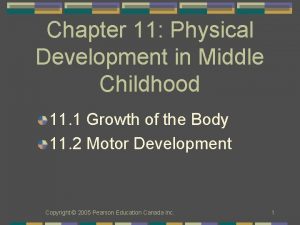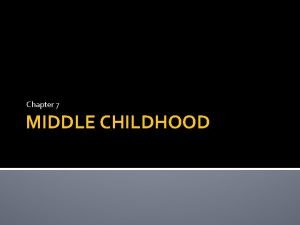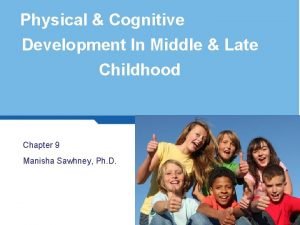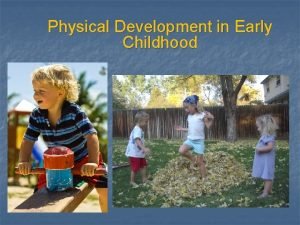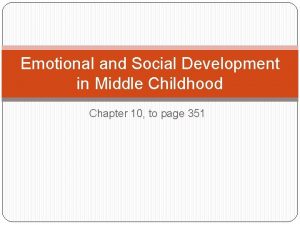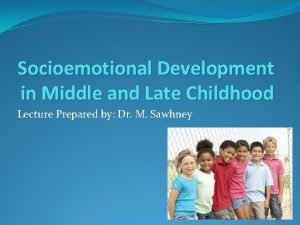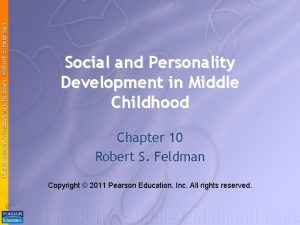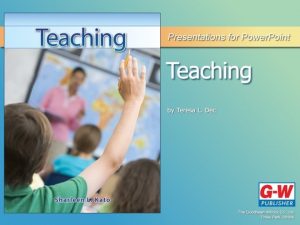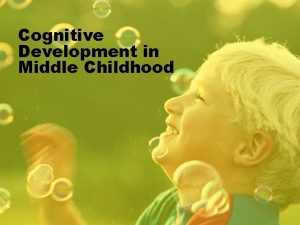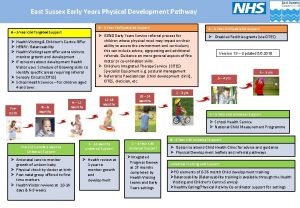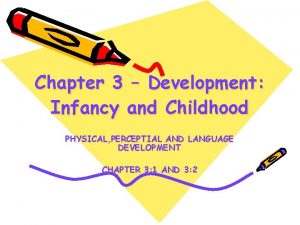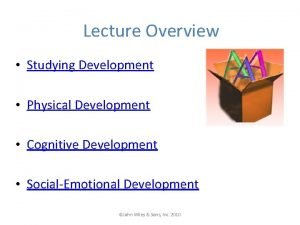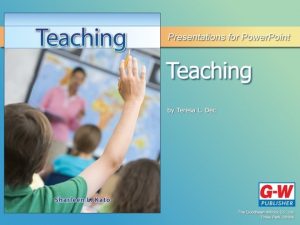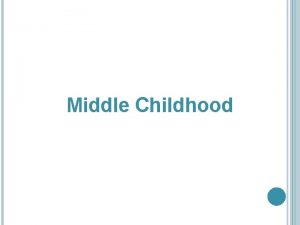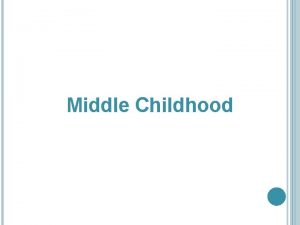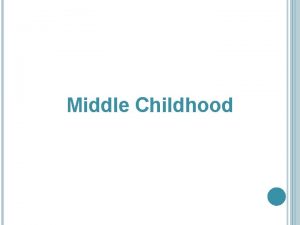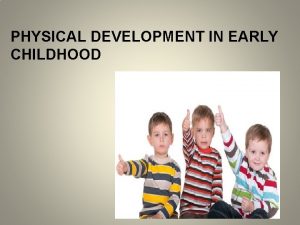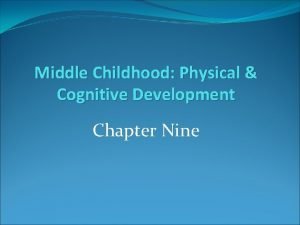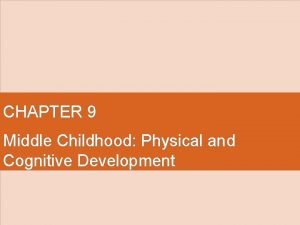Chapter 11 Physical Development in Middle Childhood 11














- Slides: 14

Chapter 11: Physical Development in Middle Childhood 11. 1 Growth of the Body 11. 2 Motor Development Copyright © 2005 Pearson Education Canada Inc. 1

11. 1 Growth of the Body Physical Growth Nutrition Tooth Development Vision and Hearing Copyright © 2005 Pearson Education Canada Inc. 2

Physical Growth continues at steady pace Boys and girls about the same size most of these years until girls enter puberty in late elementary school Some short children may receive growth hormones, but this has negative effects Copyright © 2005 Pearson Education Canada Inc. 3

Average Growth in School. Age Children Copyright © 2005 Pearson Education Canada Inc. 4

Nutrition School-age children need to eat more than preschoolers Children need to eat breakfast before school Parents need to be involved in the treatment of juvenile obesity Copyright © 2005 Pearson Education Canada Inc. 5

Tooth Development Beginning at 5 or 6 years, loss of primary teeth occurs at a rate of 4 teeth per year Fluoride in toothpaste and drinking water helps prevent tooth decay Malocclusion can be treated by orthodontia Copyright © 2005 Pearson Education Canada Inc. 6

Vision and Hearing Growth of eustachian tube helps reduce incidence of ear infections (otitis media) Myopia occurs in approximately 25% of school-age children Myopia usually emerges between 8 and 12 years Both heredity and environment contribute to myopia Copyright © 2005 Pearson Education Canada Inc. 7

11. 2 Motor Development of Motor Skills Physical Fitness Participating in Sports Accidents Copyright © 2005 Pearson Education Canada Inc. 8

Growth of Motor Skills Improved motor skill due to increased size and strength (e. g. , at 11 years can throw ball 3 times farther than at 6 years) Girls excel in fine motor skills and gross motor skills that require balance and flexibility Many gender differences due to attitudes about girls’ sports participation Copyright © 2005 Pearson Education Canada Inc. 9

Changing Motor Skills Copyright © 2005 Pearson Education Canada Inc. 10

Physical Fitness 64% of Canadian adolescents are inactive Many elementary schools in Canada do not include physical activity into the daily routine. Many children engage in sedentary leisure activities (e. g. , TV, computer games) Copyright © 2005 Pearson Education Canada Inc. 11

Participating in Sports help children be physically fit, teach cognitive and social skills Both boys and girls believe sports enhance self esteem, teach skills and cooperation, and provide physical activity Coaches should be positive and have realistic expectations Copyright © 2005 Pearson Education Canada Inc. 12

Accidents Because children in the middle years are mobile and more independent, they’re at greater risk for injury than preschool children. Copyright © 2005 Pearson Education Canada Inc. 13

Accidents Car accidents (as passenger or pedestrian) and bike accidents are most common causes of injury and death Parents can help by being good role models (seat belts, bike helmets) and by being realistic about child’s abilities Safety often the focus of community and school programs Copyright © 2005 Pearson Education Canada Inc. 14
 Physical development in middle childhood chapter 11
Physical development in middle childhood chapter 11 Physical development in middle childhood
Physical development in middle childhood Late childhood physical development
Late childhood physical development Kellogg drawing stages
Kellogg drawing stages Middle childhood years
Middle childhood years Middle and late childhood
Middle and late childhood Social and emotional development in middle childhood
Social and emotional development in middle childhood Middle and late childhood symbol
Middle and late childhood symbol Damon's stages of friendship
Damon's stages of friendship Middle childhood growth and development
Middle childhood growth and development Cognitive development in middle childhood
Cognitive development in middle childhood Physical development in early childhood
Physical development in early childhood Internally programmed growth of a child
Internally programmed growth of a child Three prenatal stages
Three prenatal stages Rovee-collier
Rovee-collier
